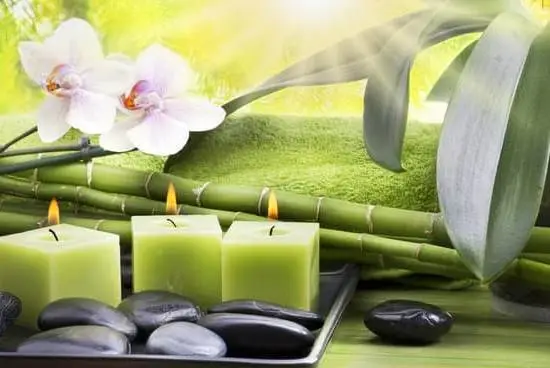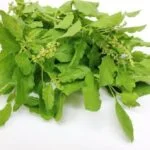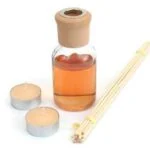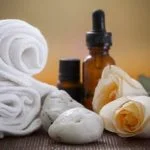Tea tree oil has become a popular essential oil known for its multitude of benefits and uses. One common application is through aromatherapy, where the oil is used to promote physical and mental well-being. In this article, we will delve into the world of tea tree oil and explore how it can be utilized in aromatherapy to enhance our overall health.
Aromatherapy, also known as essential oil therapy, is a holistic healing practice that utilizes the natural scents of plant extracts to promote relaxation, improve mood, and alleviate various ailments. Tea tree oil, derived from the leaves of the Melaleuca alternifolia plant native to Australia, has gained immense popularity for its potential therapeutic effects.
Before we dive into the specifics of tea tree oil’s role in aromatherapy, let’s first understand what tea tree oil is. Historically, tea tree oil has been used for centuries by aboriginal communities in Australia for its medicinal properties. They would crush the leaves of the Melaleuca alternifolia plant and extract the potent essential oil that possesses antiseptic and antimicrobial properties.
Fast forward to today, tea tree oil is now widely available and has earned a place among prominent essential oils used in aromatherapy practices around the world. Its distinct aroma, which can be described as medicinal with hints of camphor and pine, adds an invigorating touch to any environment while offering numerous benefits for both physical and emotional well-being.
In this article, we will explore the origins and history of tea tree oil as well as its composition and unique properties that make it ideal for use in aromatherapy.
We will also discuss specific benefits experienced when using tea tree oil in aromatherapy along with various methods of incorporating it into your daily routine. Lastly, we will address precautions you should consider before using tea tree oil aromatically and share real-life testimonials from individuals who have found success with this versatile oil.
Origins and History of Tea Tree Oil
Tea tree oil, also known as melaleuca oil, is derived from the leaves of the Melaleuca alternifolia plant, native to Australia. The Aboriginal people have a long history of using tea tree leaves for their medicinal properties, including to treat wounds, infections, and respiratory conditions. They would crush the leaves and apply them directly to the affected area or inhale the vapors for respiratory relief.
In the early 20th century, scientists began recognizing the therapeutic potential of tea tree oil when they discovered its powerful antiseptic properties. During World War II, Australian soldiers were provided with tea tree oil as part of their first aid kits due to its efficacy in treating infections. Its popularity spread beyond Australia after the war when researchers worldwide started exploring its potential uses.
Tea tree oil has been used in aromatherapy for centuries due to its distinct scent and therapeutic effects on both mind and body. It was used in traditional medicine practices by Indigenous Australians who recognized its ability to promote relaxation, relieve stress, and uplift mood. Through steam distillation of the leaves, a highly concentrated essential oil is extracted, containing various compounds such as terpinen-4-ol that contribute to its medicinal properties.
In recent years, tea tree oil has gained recognition globally as an effective ingredient in aromatherapy products. Its versatility makes it an essential component in many blends designed for promoting well-being and treating specific ailments. From ancient civilizations to modern society, tea tree oil has stood the test of time as a natural remedy with numerous benefits in aromatherapy practice.
Composition and Properties of Tea Tree Oil
Tea tree oil, also known as melaleuca oil, is derived from the leaves of the tea tree plant (Melaleuca alternifolia) native to Australia. It has been widely used for centuries in various cultures for its medicinal properties. In this section, we will explore the chemical composition and unique properties of tea tree oil that make it suitable for aromatherapy.
Chemical Composition
Tea tree oil is composed of more than 100 different compounds, with terpinen-4-ol being the most abundant and responsible for many of its therapeutic properties. Other key components include cineole, alpha-pinene, beta-pinene, and gamma-terpinene. These compounds work synergistically to provide a wide range of benefits when used in aromatherapy.
Antibacterial Properties
One of the most notable qualities of tea tree oil is its potent antibacterial activity. Studies have shown that tea tree oil can effectively inhibit the growth of bacteria such as Staphylococcus aureus, Escherichia coli, and Pseudomonas aeruginosa. This makes it an excellent choice for treating skin infections or disinfecting surfaces in your home.
Antifungal Properties
In addition to its antibacterial properties, tea tree oil also possesses antifungal activity against various types of fungi. It has been found to be effective against Candida albicans and other common fungal strains. This makes it a valuable ingredient in natural remedies for fungal infections like athlete’s foot or nail fungus.
Anti-inflammatory Properties
Tea tree oil is known for its anti-inflammatory properties, which can help reduce redness, swelling, and irritation in the skin and respiratory system. It has been used to alleviate symptoms associated with conditions like acne, eczema, bronchitis, sinusitis, and allergies.
Overall, the chemical composition of tea tree oil contributes to its unique properties that make it suitable for aromatherapy. Its antibacterial, antifungal, and anti-inflammatory properties make it a versatile essential oil for promoting overall health and well-being. In the next section, we will delve into the specific benefits of using tea tree oil in aromatherapy.
Benefits of Tea Tree Oil in Aromatherapy
Tea tree oil is well-known for its many benefits in aromatherapy. Its antibacterial, antifungal, and anti-inflammatory properties make it a versatile essential oil that can address a variety of health concerns.
One of the key benefits of tea tree oil in aromatherapy is its ability to fight against bacteria and other microorganisms. Tea tree oil contains compounds such as terpinen-4-ol, which have been found to have strong antimicrobial effects. This makes it useful for treating skin conditions like acne or fungal infections on the nails or feet, as well as respiratory issues like colds and coughs.
In addition to its antimicrobial properties, tea tree oil also possesses anti-inflammatory properties. This makes it an effective remedy for soothing inflamed skin conditions such as eczema or psoriasis. When used in aromatherapy, tea tree oil can help reduce redness, itching, and swelling associated with these conditions.
Furthermore, another benefit of tea tree oil in aromatherapy is its potential for promoting a healthy immune system. The antimicrobial properties of tea tree oil can help support the body’s natural defenses against infection, while the anti-inflammatory properties can assist in reducing inflammation that may weaken the immune system. Regular use of tea tree oil in aromatherapy may contribute to overall wellness and improve the body’s ability to fight off illness.
Overall, the benefits of using tea tree oil in aromatherapy are vast. Its antibacterial, antifungal, and anti-inflammatory properties make it an excellent choice for addressing various health concerns such as skin infections or respiratory issues. Incorporating tea tree oil into your aromatherapy rituals can provide numerous health benefits and enhance your overall well-being.
| Benefits | Description |
|---|---|
| Antibacterial | Tea tree oil fights against bacteria and microorganisms, making it useful for treating skin infections and respiratory issues. |
| Antifungal | The antifungal properties of tea tree oil make it effective in treating fungal infections on the nails or feet. |
| Anti-inflammatory | Tea tree oil has anti-inflammatory properties that can soothe inflamed skin conditions like eczema or psoriasis. |
| Immune support | The antimicrobial properties of tea tree oil can help support a healthy immune system and enhance the body’s ability to fight off illness. |
How to Use Tea Tree Oil in Aromatherapy
Using tea tree oil in aromatherapy can be a simple and effective way to experience its many benefits. There are several methods of incorporating tea tree oil into your aromatherapy routine, allowing you to choose the approach that works best for you. Here are some popular methods for using tea tree oil in aromatherapy:
- Diffusion: One of the most common ways to use tea tree oil in aromatherapy is through diffusion. Add a few drops of tea tree oil to an essential oil diffuser or vaporizer and let it disperse throughout the room. This method allows you to enjoy the aromatic benefits of tea tree oil while creating a pleasant and calming atmosphere.
- Massage: Tea tree oil can also be used topically during massages for a relaxing and invigorating experience. Create a massage blend by combining a carrier oil, such as coconut or jojoba oil, with a few drops of tea tree oil. Gently massage the blend onto your skin, focusing on areas that need attention or relaxation.
- Inhalation: If you’re looking for quick relief from congestion, sinus issues, or respiratory discomfort, inhalation is an effective method. Add a few drops of tea tree oil to hot water in a bowl and cover your head with a towel to create a steam tent. Breathe deeply and inhale the steam infused with tea tree oil for respiratory support.
- Baths: Transform your bath time into a therapeutic experience by adding tea tree oil to your bathwater. Mix a few drops of tea tree oil with a carrier oil or an unscented bath gel before adding it to the warm water. Enjoy the soothing effects of tea tree oil as it revitalizes and invigorates your senses.
Remember to always dilute tea tree oil properly with a carrier before applying it topically and perform patch tests prior to using it on your skin, especially if you have sensitive skin or allergies. Additionally, it’s important to consult with a qualified aromatherapist or healthcare professional before using tea tree oil, especially if you have any underlying health conditions or are pregnant.
By incorporating tea tree oil into your aromatherapy routine through diffusion, massage, inhalation, and baths, you can experience the full range of benefits that this versatile oil has to offer. Experiment with different methods and find what works best for you and your specific needs. With proper usage and safety precautions in mind, tea tree oil can enhance your aromatherapy practice and promote overall well-being.
Tea Tree Oil Blends for Aromatherapy
Stress Relief Blend
Tea tree oil can be combined with other essential oils to create a soothing blend that helps relieve stress and anxiety. For this blend, combine 4 drops of tea tree oil, 2 drops of lavender oil, and 2 drops of chamomile oil.
Lavender oil is known for its calming properties, while chamomile has a gentle and relaxing scent. Together with tea tree oil, this blend can promote a sense of calmness and relaxation when used in aromatherapy diffusers or during massage therapy.
Respiratory Health Blend
Tea tree oil has been traditionally used to help improve respiratory health due to its antimicrobial and expectorant properties. To create a respiratory blend, combine 5 drops of tea tree oil with 3 drops of eucalyptus oil and 2 drops of peppermint oil.
Eucalyptus oil is known for its decongestant properties and can help clear the sinuses, while peppermint oil provides a cooling sensation that can assist in relieving nasal congestion. This powerful combination can be added to an inhaler or diffuser to support healthy breathing.
Skin Care Blend
Tea tree oil is well-known for its antiseptic and anti-inflammatory properties, making it an excellent addition to skincare routines. To create a skin care blend, mix 5-6 drops of tea tree oil with a carrier oil such as jojoba or coconut oil. Apply the mixture directly to the skin to help cleanse pores, reduce inflammation, and prevent acne breakouts. This blend can also be added to natural homemade skincare products like creams or serums for added benefits.
Experimenting with different tea tree oil blends can help individuals tailor their aromatherapy experience to their specific needs and preferences. It’s important to note that essential oils are highly concentrated and should be used with caution. Always perform a patch test before applying any blend directly to the skin and consult with a healthcare professional if you have any underlying health conditions.
Precautions and Considerations
Tea tree oil is widely praised for its numerous benefits in aromatherapy, but it is important to exercise caution when using this potent essential oil. While tea tree oil is generally safe for most individuals, there are a few precautions and considerations to keep in mind to ensure optimal usage and avoid any adverse effects.
First and foremost, it is crucial to remember that tea tree oil should never be ingested orally. This oil is highly concentrated and can cause irritation or even toxicity if swallowed. Therefore, it should only be used externally or inhaled through aromatherapy methods.
When applying tea tree oil topically, it is recommended to dilute it with a carrier oil such as coconut or almond oil before use. This helps prevent skin irritation, especially for individuals with sensitive skin. A general rule of thumb is to mix approximately 2-3 drops of tea tree oil with one tablespoon of carrier oil.
It is also important to perform a patch test before using tea tree oil on larger areas of the body. Apply a small amount of diluted tea tree oil to the inside of your forearm and wait for at least 24 hours to check for any adverse reactions such as redness, itching, or inflammation.
Furthermore, tea tree oil should not be used undiluted on children or pets as their skin tends to be more sensitive than adults’. Always consult with a healthcare professional before using tea tree oil on children or animals.
Overall, while tea tree oil offers numerous benefits in aromatherapy, it is crucial to take precautions and use it safely. By following these guidelines and considering individual sensitivities and allergies, you can incorporate tea tree oil effectively into your aromatherapy routine without any concerns about potential risks or contraindications.
Testimonials and Success Stories
Many individuals have personally experienced the benefits of tea tree oil in aromatherapy and have shared their success stories and testimonials. These accounts provide valuable insights into the effectiveness of tea tree oil for various health and well-being concerns.
One common success story involves the use of tea tree oil for skincare purposes. Many individuals have found that incorporating tea tree oil into their skincare routine has resulted in clearer, healthier-looking skin. Tea tree oil’s antibacterial properties help combat acne-causing bacteria, while its anti-inflammatory properties can reduce redness and irritation. Users rave about how tea tree oil has improved their complexion and helped them regain their confidence.
Moreover, there are numerous testimonials regarding the use of tea tree oil blends for respiratory health. Tea tree oil is known for its ability to alleviate symptoms of congestion, coughing, and respiratory infections. By either diffusing tea tree oil or applying a blend topically, individuals have experienced relief from respiratory issues, enhanced breathing, and decreased frequency of colds.
Additionally, many people have successfully used tea tree oil in aromatherapy to manage stress and anxiety. The soothing properties of this essential oil can help calm the mind and relax the body. Individuals have reported feeling more centered, grounded, and peaceful after incorporating tea tree oil into their daily routine through inhalation or massage.
These testimonials highlight just a few examples of the transformative effects that individuals have experienced with tea tree oil in aromatherapy. It is important to note that personal experiences may vary, as everyone’s body is unique. However, these success stories serve as encouraging evidence that tea tree oil can indeed be a powerful addition to your aromatherapy practice.
Before using tea tree oil in aromatherapy, it is advisable to conduct a patch test on a small area of your skin to check for any allergic reactions or sensitivities. Additionally, it is recommended to consult with a healthcare professional, especially if you have any underlying health conditions or are pregnant or nursing. By taking these precautions and considering individual circumstances, one can safely explore the potential benefits of tea tree oil in aromatherapy.
Conclusion
In conclusion, tea tree oil has a long and rich history in aromatherapy, with its origins dating back to ancient cultures. Its unique composition and properties make it a versatile and powerful tool for promoting health and well-being. From its antibacterial and antifungal properties to its anti-inflammatory effects, tea tree oil offers a wide range of benefits when used in aromatherapy.
Throughout this article, we have explored the various ways in which tea tree oil can be incorporated into aromatherapy practices. Whether through diffusion, massage, inhalation, or baths, there are numerous methods for harnessing the potential of tea tree oil. Additionally, we have discussed popular tea tree oil blends for specific purposes such as stress relief, respiratory health, and skincare.
While using tea tree oil in aromatherapy can provide many benefits, it is important to exercise caution and take certain precautions. This includes understanding any potential risks or contraindications associated with its use and following safety tips for proper usage.
Frequently Asked Questions
What is tea tree oil essential oil good for?
Tea tree oil essential oil is known for its numerous beneficial properties. One of its primary uses is as a powerful antimicrobial agent. It has been historically used as an antiseptic to treat wounds, cuts, and infections due to its ability to kill bacteria, viruses, and fungi.
Additionally, tea tree oil possesses anti-inflammatory properties that can help reduce swelling on the skin caused by conditions like acne or insect bites. It also acts as a natural insect repellent and can be used to deter lice or other pests. Furthermore, tea tree oil has been reported to have potential benefits for treating dandruff and promoting healthy hair.
How do you use tea tree aromatherapy?
Tea tree aromatherapy is a popular method for using tea tree essential oil for therapeutic purposes. To use tea tree aromatherapy, you can add a few drops of tea tree oil into a diffuser filled with water and let it disperse throughout the room through evaporation.
This method allows the scent of tea tree oil to be inhaled gently, providing potential benefits such as reducing stress and anxiety. Another way to enjoy tea tree aromatherapy is by applying diluted tea tree oil onto a cloth or tissue and inhaling deeply.
Is tea tree oil good for calming?
While tea tree oil is not typically associated with calming effects, it does possess properties that may indirectly contribute to relaxation and calmness. The scent of tea tree oil may have an uplifting effect on some individuals, helping to alleviate feelings of stress or fatigue.
Moreover, tea tree oil’s antimicrobial properties make it useful in maintaining a clean environment that promotes overall well-being, contributing to a sense of calmness indirectly by reducing potential sources of illness or infection around you. However, if seeking specific calming effects from aromatherapy oils, certain other essential oils like lavender or chamomile are often recommended instead of tea tree oil.

Are you looking for a natural way to improve your health and wellbeing?
If so, aromatherapy may be the answer for you.





